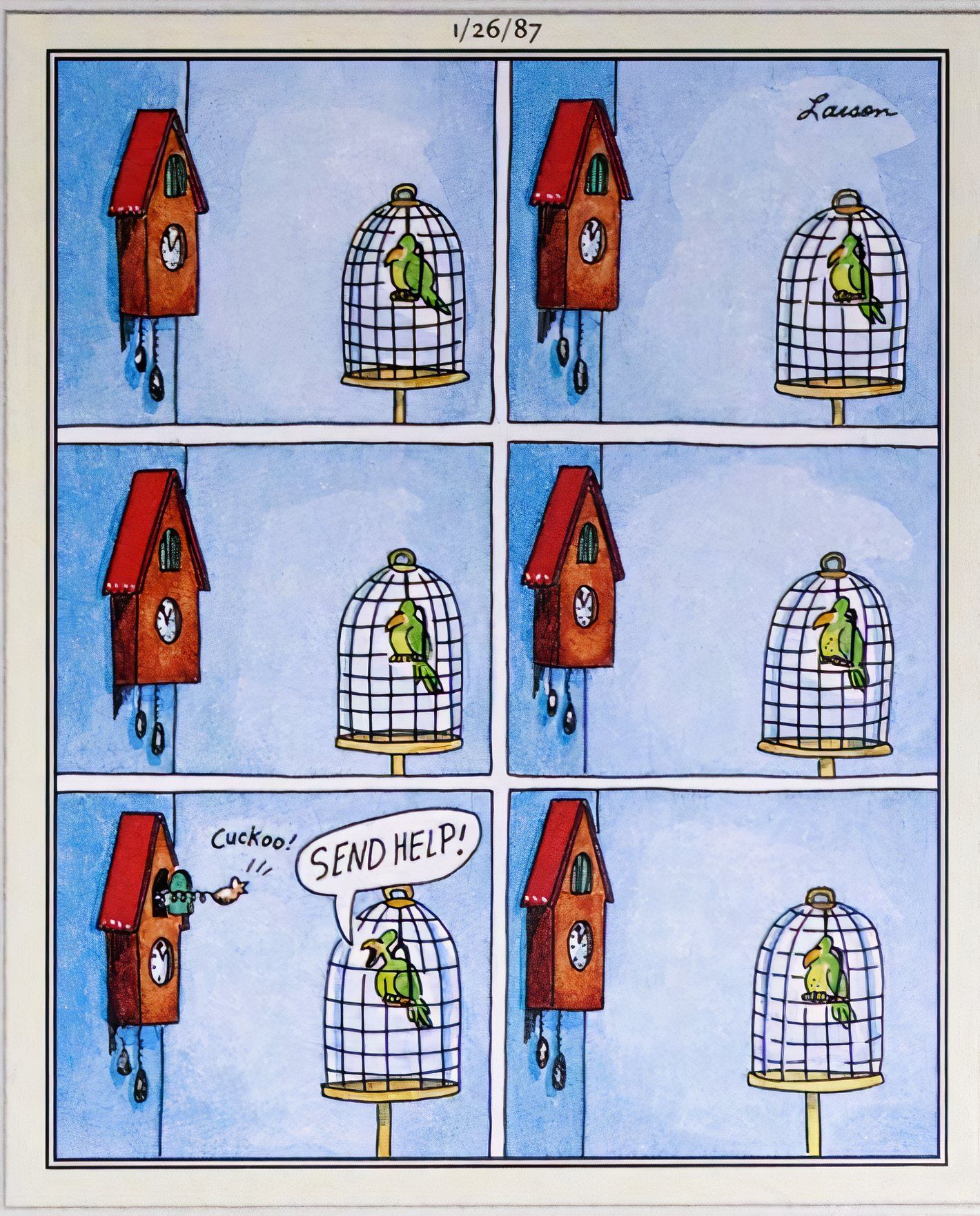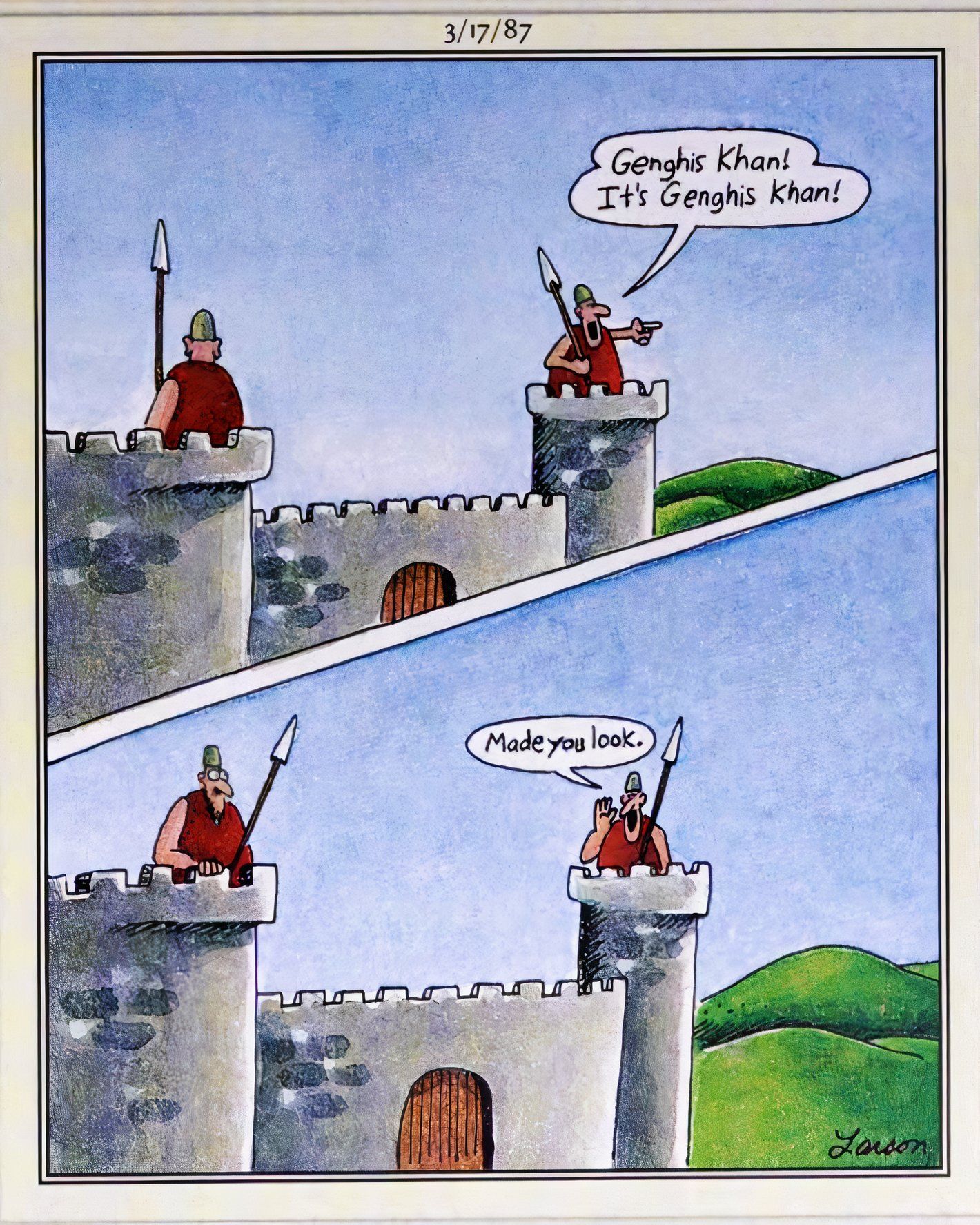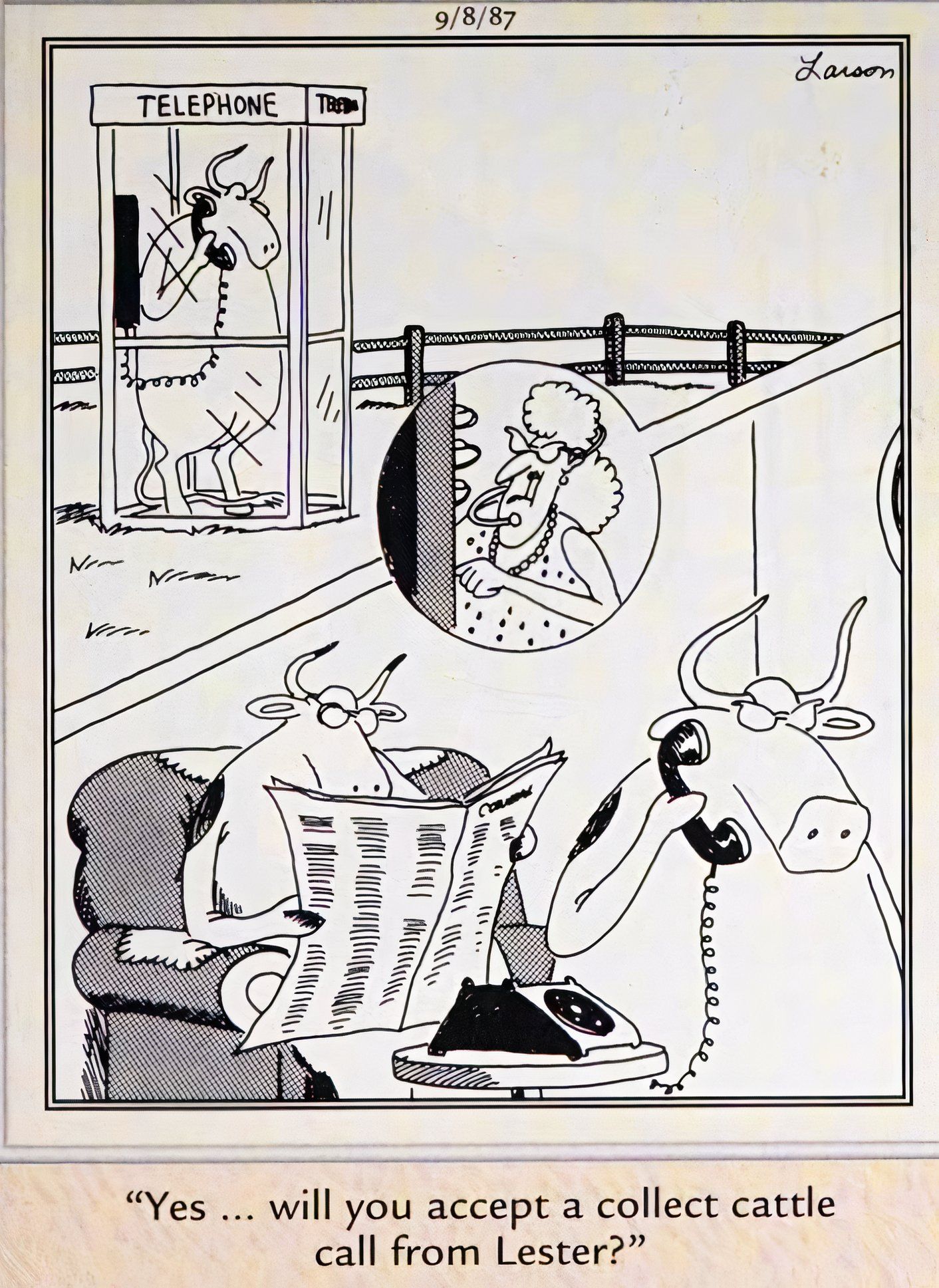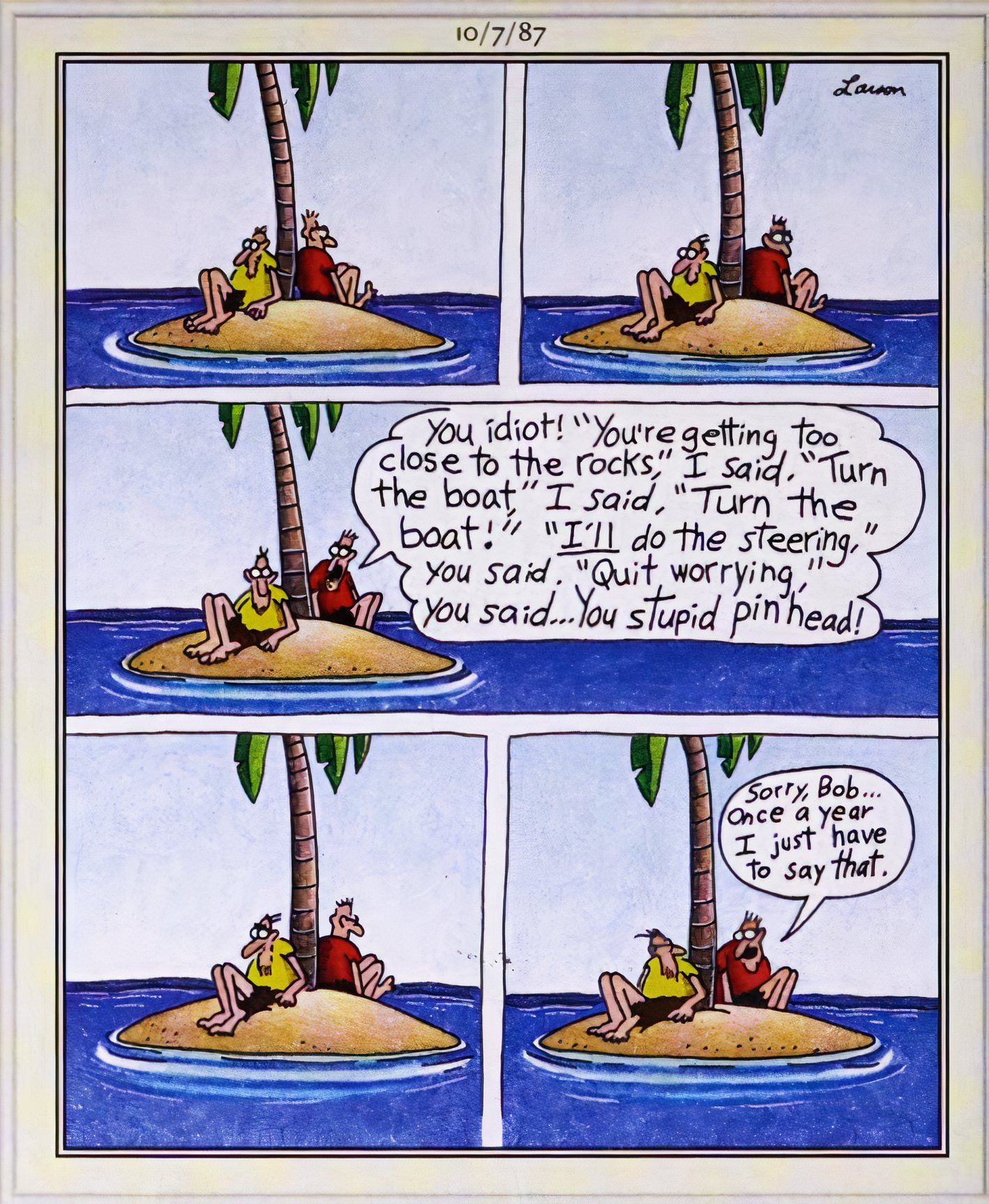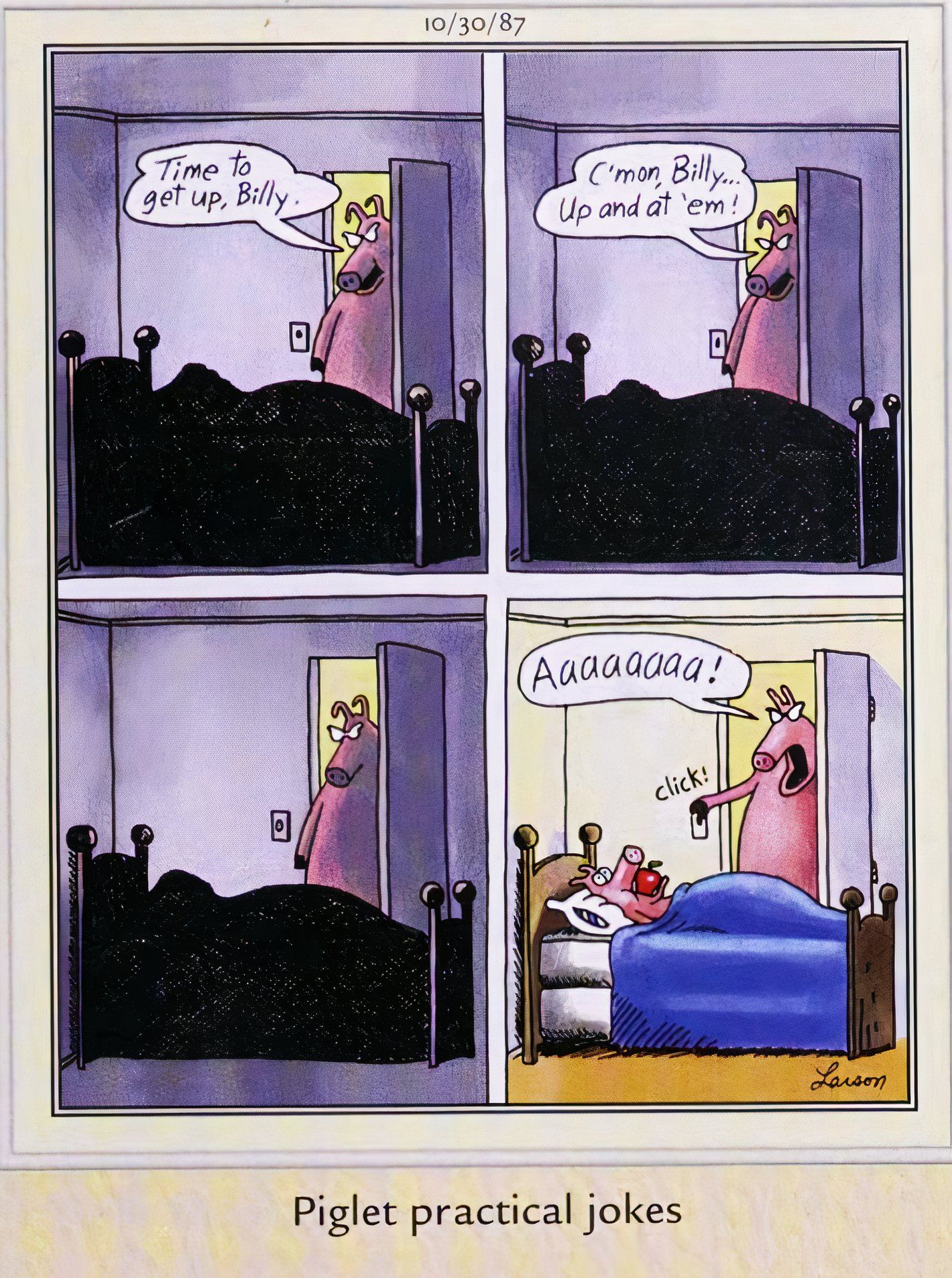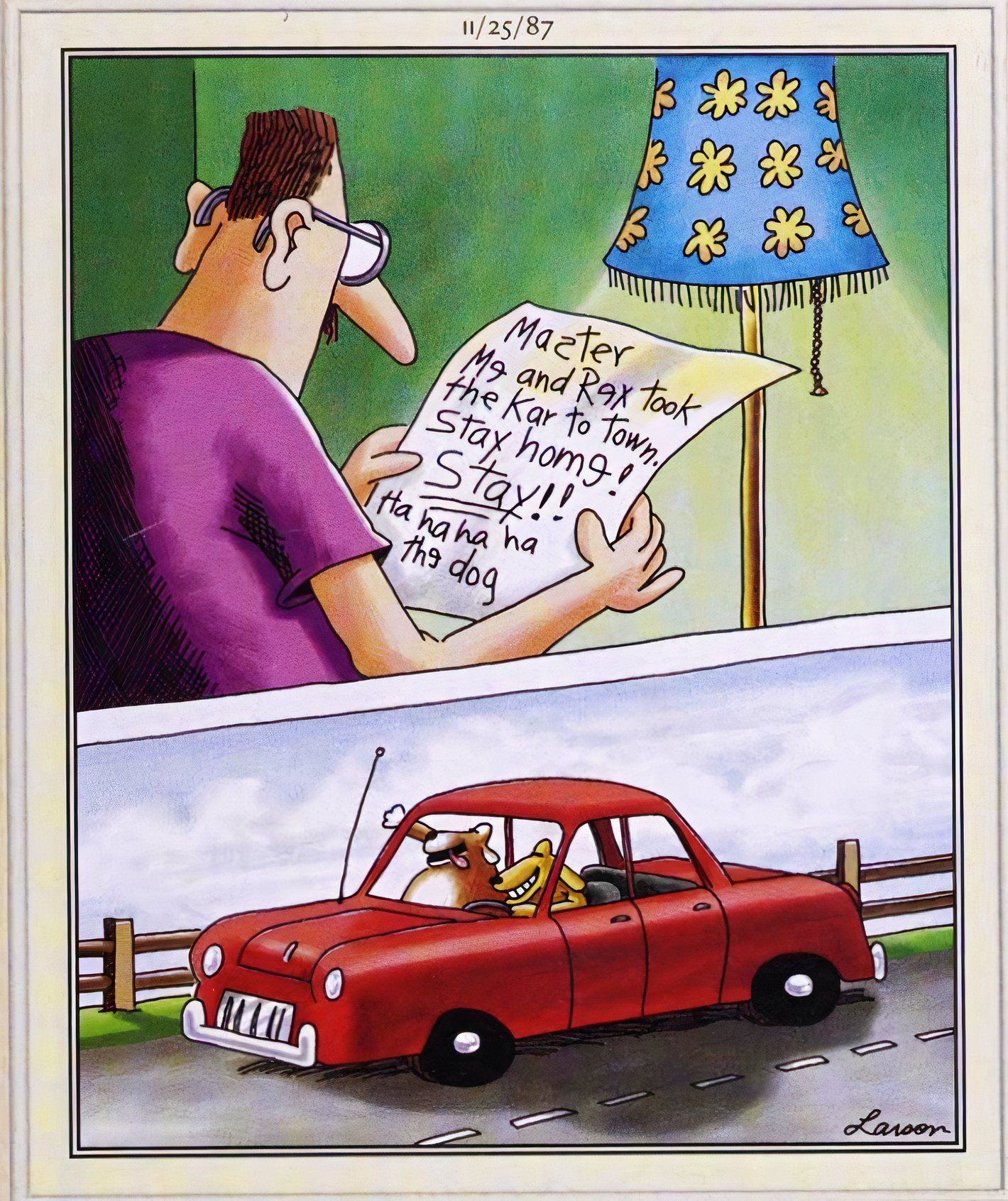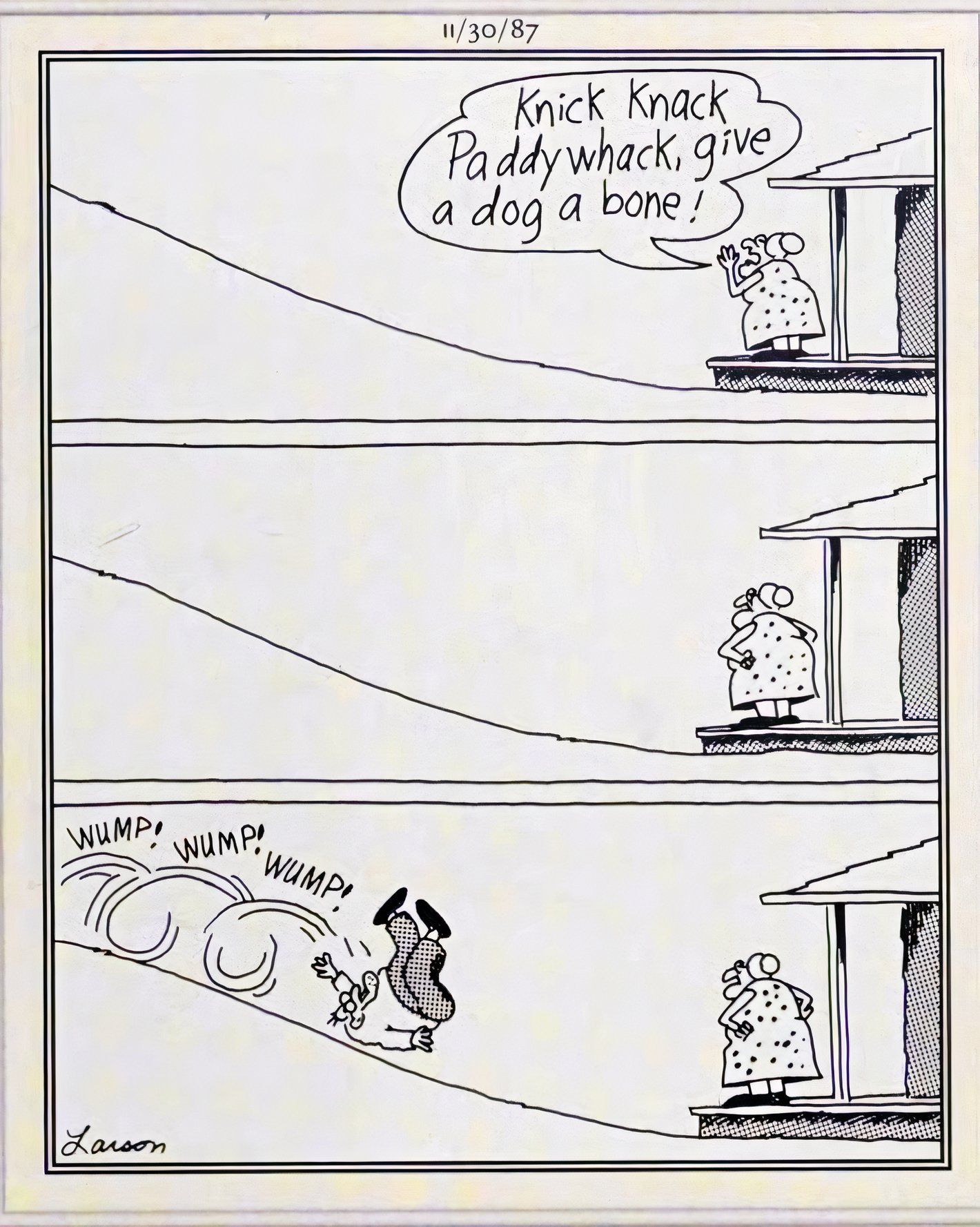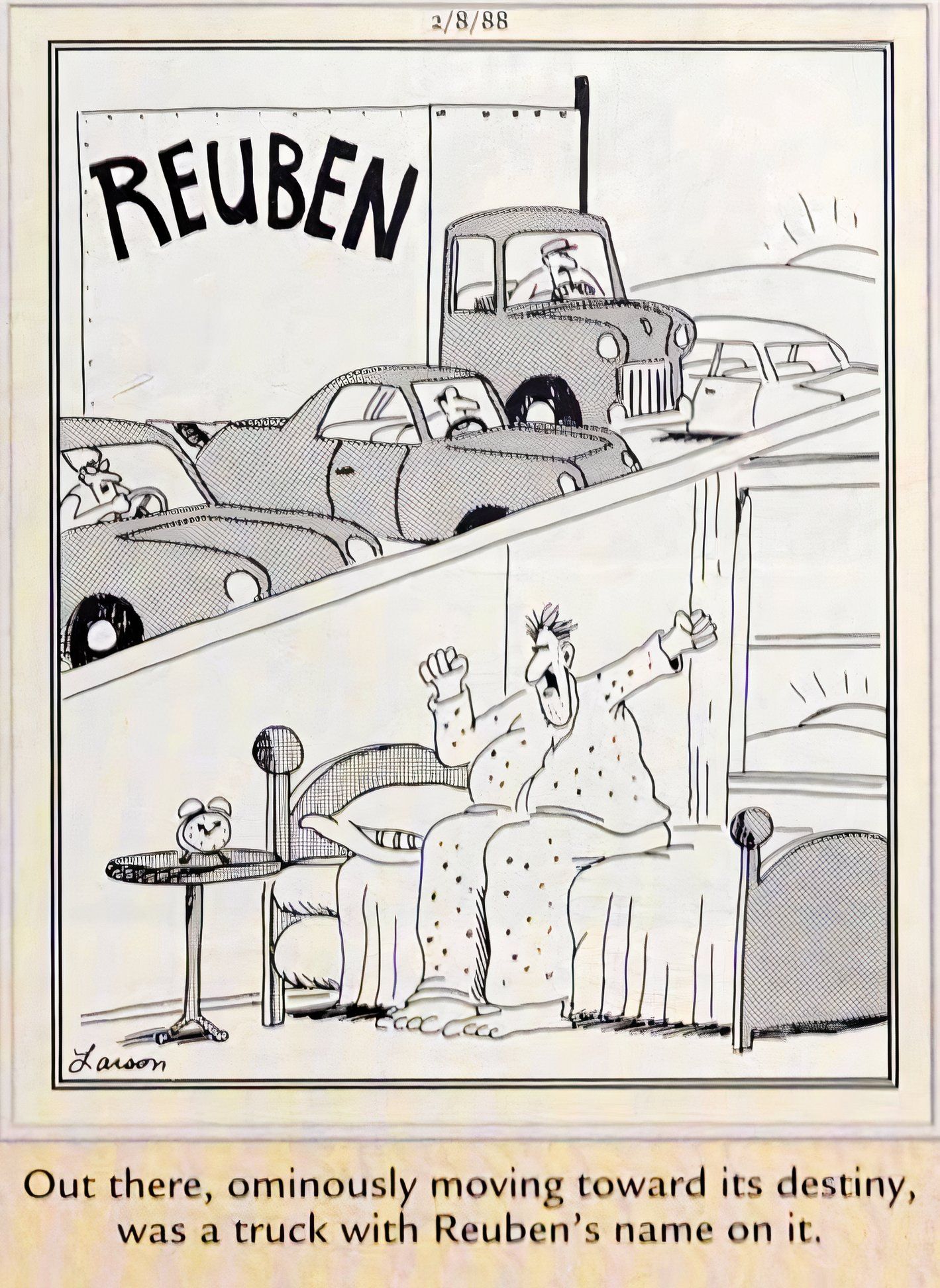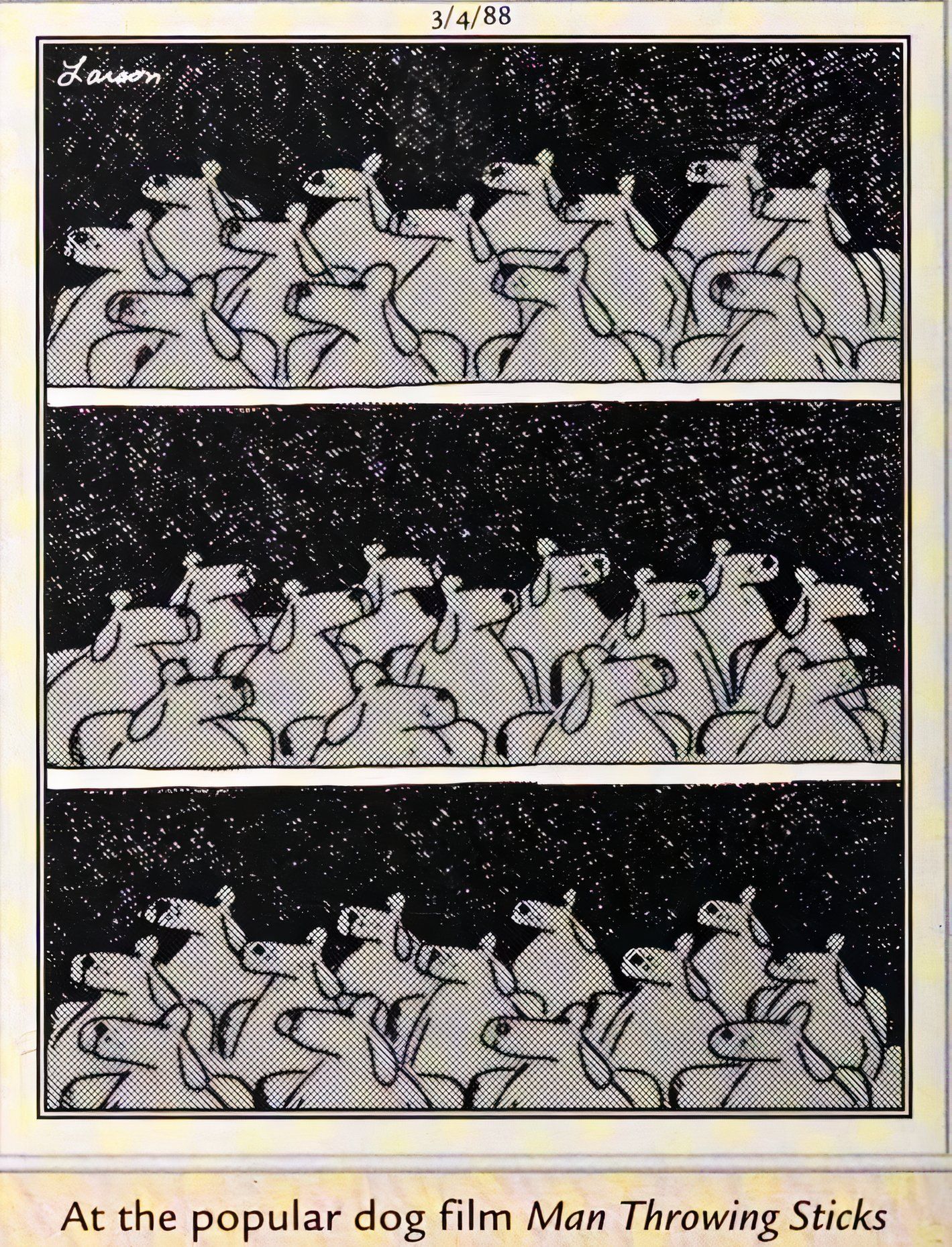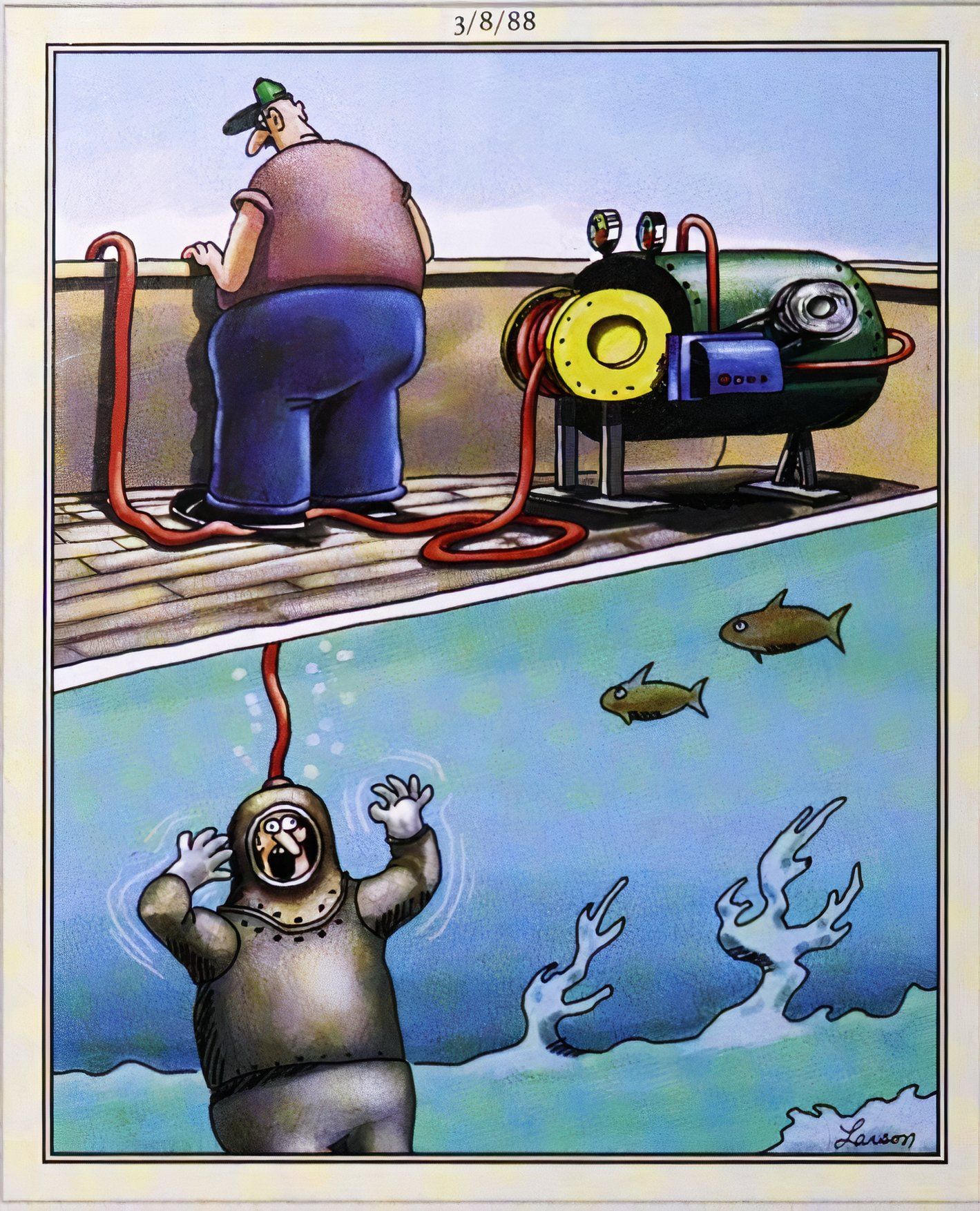Summary
- As
The Far Side
progressed, artist Gary Larson increasingly embraced the use multi-panel illustrations, opening up new frontiers for the
Far Side’s
humor. - Sequential panels gave Larson more room for punchlines to breathe & land effectively; allowing him to play with time and space, depict action, and compare/contrast between distinct locations.
- The split-panel format in particular proved to be highly effective for Gary Larson’s style of humor in
The Far Side
, though he also excelled at using four-and-six panels when it suited him.
Though iconoclastic cartoon The Far Side is best known for its single-panel punchline, artist Gary Larson’s inclination toward experimentation resulted in the strip’s share of installments that utilized a sequence of images. Especially in the later years of the strip, as Larson became increasingly comfortable taking creative risks, some of the funniest Far Side comics featured multiple panels.
As skilled as Gary Larson was at depicting isolated moments in time using a solitary illustration, sequential panels allowed him to achieve punchlines that were less likely to land if not given time and space to breathe.
Over time, Larson’s multi-panel cartoons became more elaborate, indicating that he grew more excited about the form, and its potential, as his newspaper cartoonist career progressed. Just as understanding how The Far Side excelled in the single-panel style is vital to understanding its success and cultural impact, studying Gary Larson’s multi-panel cartoons offers a unique dimension of insight into his creative appeal.
Related
This Recurring Far Side Joke Is the Perfect Metaphor For Gary Larson’s Humor
Though it didn’t appear with the frequency of the comic’s infamous dogs, ducks, cats, & chickens, one repeat gag perfectly sums up The Far Side.
10 Gary Larson Knew Why The Caged Bird Sings
First Published: January 26, 1987
This multi-panel Far Side cartoon is particularly interesting, because five of its six panels actually repeat the same image, as a way of accentuating the punchline contained in the penultimate panel. Here, a pet bird in a cage perches, watching a nearby cuckoo clock on the wall; when it strikes the hour, and the animatronic bird within emerges, the caged bird blurts out “send help!”
As a single-image Far Side, the fifth panel here could still work in isolation – yet the preceding repetition of the image is crucial to building a level of anticipation in the reader that greatly enhances the joke’s potency when it does finally arrive. Further, the successive beats of the initial images replicate the “tick-tock” passage of time, as the pet bird waits in vain for a rescue that is never going to come.
9 With The Far Side’s Split-Panel Comics, Gary Larson Perfected The “One-Two” Punchline
First Published: March 17, 1987
Many of Gary Larson’s best multi-panel Far Side comics employed a diagonally split image, which allowed the artist several different comedic options not available with one-panel cartoons. Here, he depicts a medieval practical joke, as in the top panel a man on guard duty atop a castle shouts “Gengis Khan! It’s Gengis Khan!”, while in the bottom panel, having drawn the attention of a look-out in the adjacent turret, the man shouts: “Made you look!“
This comic offers an example of Larson’s penchant for making a mockery of real history; however, the joke hinges not on the reference to the infamous Mongol conqueror, but on the beat of hesitation afforded by the use of two consecutive images. In one-panel Far Side comics, set-up and pay-off had to come simultaneously. Here, the artist was able to separate them, to great comedic effect.
8 Split-Panel Cartoons Allowed Gary Larson’s Humor Room To Maneuver
First Published: September 8, 1987
With the previous two entries, Gary Larson used the multi-panel format to play with time; here, it enables him to occupy multiple spaces at once, in order tell a joke that relies on distance. In the top panel, one of The Far Side’s trademark cows is pictured in a phone booth. On the bottom, a cow is shown answering the phone, while another sits in a recliner in the background, reading a newspaper.
The two images are connected by a drawing of a telephone operator, who asks: “Will you accept a collect cattle call from Lester?” Though the pun in the caption of this Far Side might make readers roll their eyes, any laughter it does elicit from the audience is indebted to the split-panel format, which allows Larson to depict both sides of this single moment of technological connection.

The Far Side Complete Collection
$71 $125 Save $54
Fans of the far side can’t pass up this master collection of Gary Larson’s finest work. Originally published in hardcover in 2003, this paperback set comes complete with a newly designed slipcase that will look great on any shelf. The Complete Far Side contains every Far Side cartoon ever published, which amounts to over 4,000, plus more than 1,100 that have never before appeared in a book and even some made after Larson retired.
7 Time Flies When You’re Stranded On The Far Side
First Published: October 7, 1987
People stranded on tiny islands in the middle of the sea were one of Gary Larson’s most beloved recurring subjects; this panel features a sequence of images in which a moment of silent reflection turns into “Al” berating “Bob” for causing the shipwreck that stranded them in the first place.
Once again, Gary Larson uses a sequence of panels – in this case, five – to allow time to aid his punchline. Evidently stranded on this island for years, Al only voices his resentment toward Bob “once a year,” with the panels without either character speaking adding to the sense that this is an abrupt, if not unexpected, outburst, making the sudden deluge of dialogue in the middle stand-out more than if it had come in a single-panel style.
6 Gary Larson’s Multi-Panel Comics Show He Knew How To Tease The Audience
First Published: October 30, 1987
As much as he eschewed the traditional four-panel comic format, Gary Larson repeatedly proved that he could use it to great effect, when he so chose. That is the case here, as a four-panel sequence features a pig parent trying to wake up their offspring – only to be shocked and horrified to flip on the light in the kid’s room to find them lying motionless in bed with an apple stuffed in their mouth.
Captioned “pig practical jokes,” it is evident that the child is merely pulling a cruel gag on the parent; the use of multiple panels allows for the reader to inhabit the parent’s point-of-view here, in a way, leading up to the hilarious pay-off in the final frame. Again, anticipation is crucial to the success of this Far Side joke, with Gary Larson masterfully manipulating the reader’s attention.
5 Using Multiple Panels Unleashed More Comedic Potential For The Far Side
First Published: November 25, 1987
Dogs were a staple of The Far Side, featuring in some of the comic’s most unequivocally hilarious installments. This one uses the split-panel format to particularly potent comedic effect, depicting a man reading a note from his dogs explaining that they’ve taken his car, while the bottom panel shows the reader their glorious joyride.
This is another example of a split-panel Far Side in which Gary Larson used the format to compare/contrast two distinct locations at once. Hilariously, the dogs’ note to the owner emphatically tells him to “stay,” with an added “hahaha” indicating the dogs are aware of the irony of this, while the canine carjackers themselves are shown to be enjoying the pure joy of being on the road without human interference.
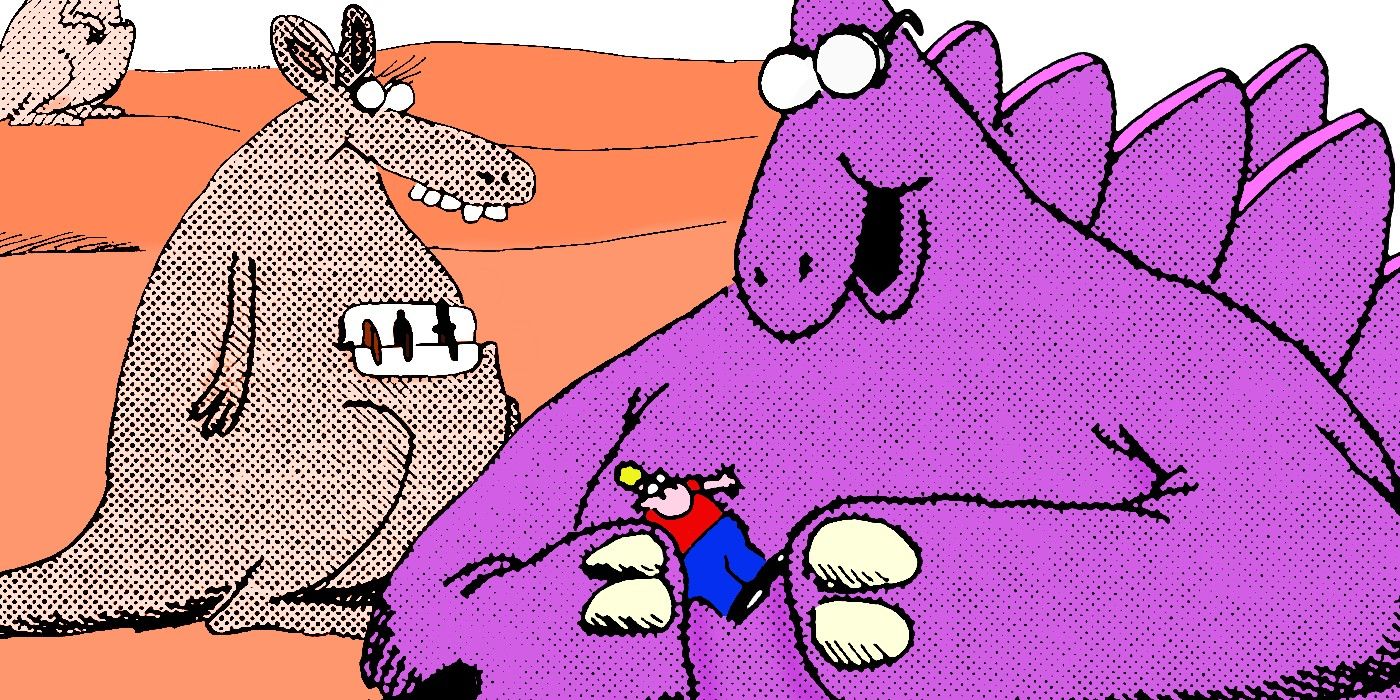
Related
THE FAR SIDE: 12 Comics From 1983 Designed To Make Readers Go “WHAT-THE?”
As funny as The Far Side was, Gary Larson just as frequently aimed to elicit another reaction, as he looked to test his readers’ “What-the?” reflex.
4 Gary Larson Recognized The Inherent Absurdity Of This Nursery Rhyme
First Published: November 30, 1987
Often, Gary Larson got a reaction from his readers by taking some aspect of popular culture and putting an absurd twist on it. It wasn’t even necessary for him to take that extra step with this Far Side strip, as Larson seemingly identified the engrained absurdity of the iconic “This Old Man” nursery rhyme, which ends with the eponymous elderly fellow “rolling home.”
Larson faithfully recreates the rhyme here, as the top panel features an old woman stepping out onto her front porch and calling, “knick knack, paddy whack, give the dog a bone!” while the bottom panel has an old man, presumably her husband, tumbling down a hill toward their house. The intervening panel, meanwhile, depicts a moment of silent serenity – before the old man makes his rough return home from who knows where.
3 Gary Larson Offers A Darkly Silly Meditation On Fate
First Published: February 8, 1988
With The Far Side, Gary Larson often struck contradictory tones within a single image – or in this case, a duel-image. Here, the top panel features a truck with “REUBEN” on the side, stuck in traffic, while below, a man wakes up in the morning and stretches as he prepares to face the day ahead.
The caption ties these two disperate images together, revealing that: “Out there, ominously moving towards its destiny, was a truck with Reuben’s name on it.” In this way, Larson manages to deliver a joke that is both blatantly silly, and also somewhat unnerving – as the artist takes the idea of a person waking up not knowing it is their day to die, and extrapolates the goofiest possible punchline from it.
2 Gary Larson Knew Successful Art Is All About Keeping The Audiences’ Attention
First Published: March 4, 1988
The humor of this panel relies on successive panels in order to depict action, as a packed theater full of The Far Side’s familiar anthropomorphic dogsfollow the action of a movie called “Man Throwing Sticks” on screen, as amusingly, they look to one side, then the other, then back, from one image to the next.
As an artist, Gary Larson readily admitted that he eschewed the idea of deeper meaning in his work, in order to focus on crafting illustrations that immediately captured the reader’s attention. In this panel, he offers a hilarious extrapolation of an ideally-transfixed audience, except rather than any human drama playing out on the screen, it is a tale of simple pleasures that has these dogs captivated.
1 The Far Side’s Split-Panel Cartoons Excelled At “Set-Up” And “Pay-Off”
First Published: March 8, 1988
This hilarious Far Side panel doesn’t need any words to get its dark joke across, though it might take readers a double-take before they realize the grim punchline. In the bottom-half of the split image, a scuba diver reacts in horror as his oxygen supply is cut off – while above, in the top-half, the diver’s friend inadvertently dooms him by stepping on the man’s oxygen tube, cutting off his air flow.
This is a particularly great example of a split-frame Far Side cartoon because of the way the stacked images mirror the action of the comic, with the man above water on top, and the diver below the surface on the bottom. Though readers might initially miss the fact that the man above the surface is stepping on the diver’s oxygen hose, once they realize it, this immediately becomes an all-time memorable Far Side.
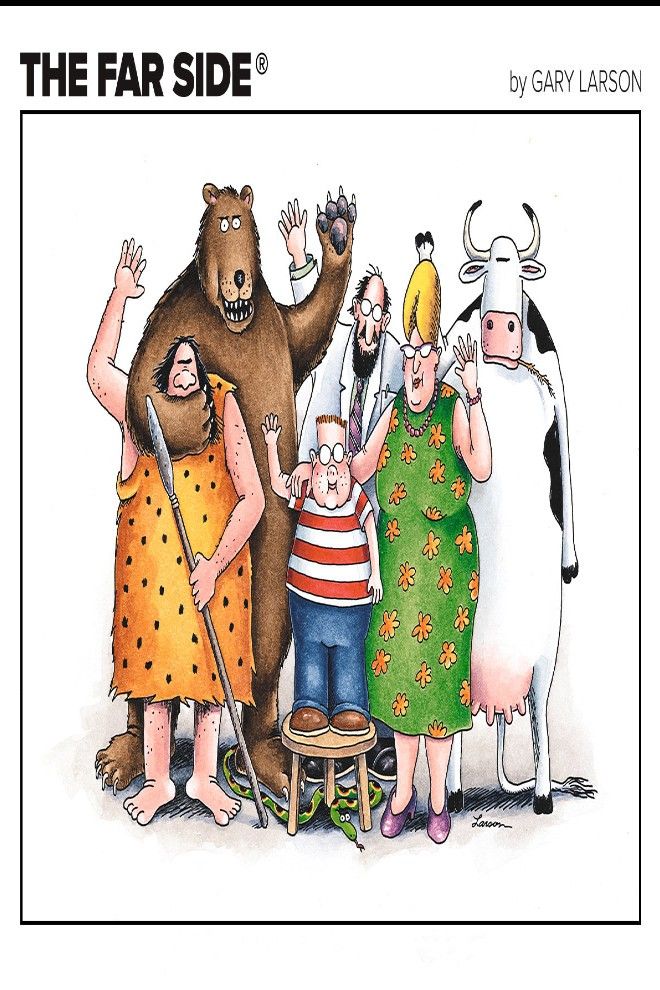
The Far Side
The Far Side is a humorous comic series developed by Gary Larson. The series has been in production since 1979 and features a wide array of comic collections, calendars, art, and other miscellaneous items.



